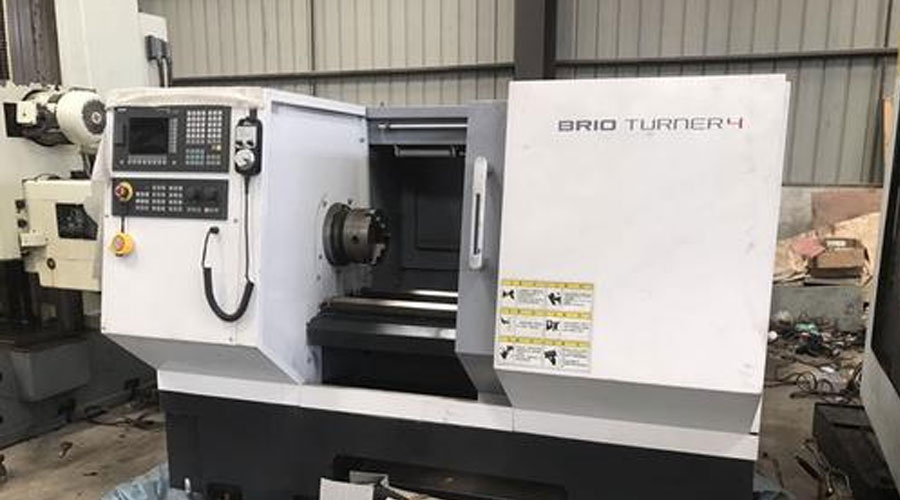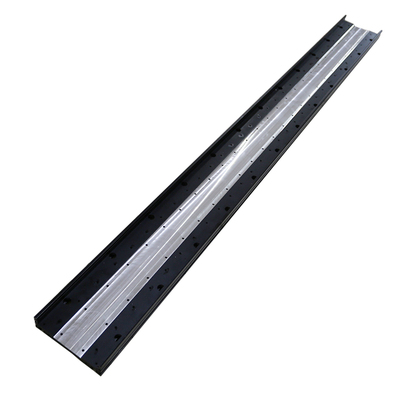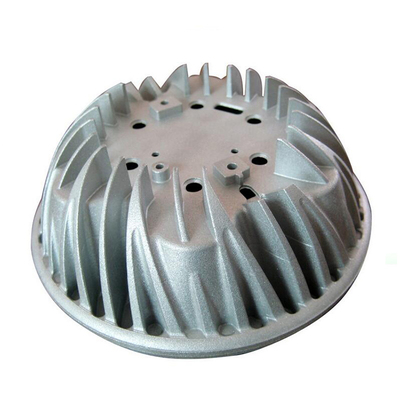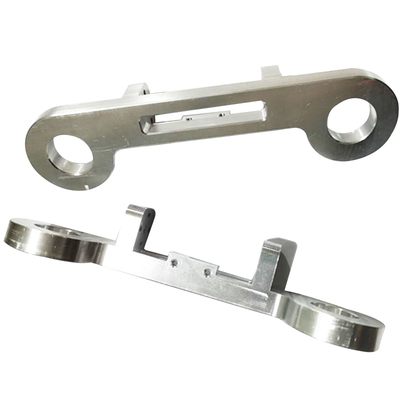What Is Machine Tool?
Definition Of Machine Tool
|
The machine tool is a machine that processes blanks or workpieces of metal or other materials to obtain the required geometry, dimensional accuracy, and surface quality.The parts of mechanical products are usually processed by machine tools. A machine tool is a machine that makes a machine, and also a machine that can make the machine tool itself. This is the main feature of the machine tool that distinguishes it from other machines. Therefore, the machine tool is also called a working mother machine or a machine tool. |

The Classification Of Machine Tools
Metal cutting machine tools, mainly used for cutting metal;
Woodworking machine tool for cutting wood;
Special processing machine tools, which perform special processing on workpieces by physical and chemical methods;
Forging machinery. The narrowly defined machine tool only refers to the most widely used and largest number of metal cutting machine tools.
- 1. Metal cutting machine tools can be divided into various types according to different classification methods.
- 1.1 According to the processing method or processing object, it can be divided into lathe, drilling machine, boring machine, grinder, gear processing machine tool, thread processing machine tool, spline processing machine tool, milling machine, planer, inserting machine, broaching machine, special processing machine tool, sawing machine and engraving machine, etc. . Each type is divided into several groups according to its structure or processing objects, and each group is divided into several types.
- 1.2 According to the size of the workpiece and the weight of the machine tool, it can be divided into instrument machine tools, small and medium machine tools, large machine tools, heavy machine tools and super heavy machine tools;
- 1.3 According to the processing accuracy, it can be divided into ordinary precision machine tools, precision machine tools and high precision machine tools;
- 1.4 According to the degree of automation, it can be divided into manually operated machine tools, semi-automatic machine tools and automatic machine tools;
- 1.5 According to the automatic control mode of the machine tool, it can be divided into copying machine tools, program control machine tools, digital control machine tools, adaptive control machine tools, machining centers and flexible manufacturing systems;
- 1.6 According to the scope of application of machine tools, it can be divided into general-purpose, special-purpose and special-purpose machine tools.
- 1.7 There is a kind of automatic or semi-automatic machine tool based on standard general components and a small number of special components designed according to the specific shape of the workpiece or the processing technology. It is called a combined machine tool.
- 1.8 For the processing of one or several parts, a series of machine tools are arranged in sequence, and equipped with an automatic loading and unloading device and a workpiece automatic transfer device between the machine tool and the machine tool. A group of machine tools formed in this way is called an automatic production line for cutting processing.
- 1.9 The flexible manufacturing system is composed of a group of digitally controlled machine tools and other automated process equipment. It is controlled by an electronic computer and can automatically process workpieces with different processes, which can adapt to multiple varieties of production.
The machine tool is the basic production equipment of the machinery industry. Its variety, quality and processing efficiency directly affect the production technology level and economic benefits of other mechanical products. Therefore, the modernization level and scale of the machine tool industry, as well as the quantity and quality of the machine tools are one of the important signs of a country's industrial development.
3. A brief history of the development of machine tools
The tree lathe, which appeared in more than 2,000 BC, was the earliest prototype of the machine tool. When working, pedal the ferrule at the lower end of the rope, use the elasticity of the branch to make the workpiece driven by the rope, and use the shell or stone as a tool to move the tool along the plank to cut the workpiece. This principle is still used in the medieval elastic rod and rod lathe.
In the fifteenth century, due to the need to manufacture watches and weapons, there were thread lathes and gear machining machines for watchmakers, as well as hydraulically driven barrel boring machines. Around 1500, the Italian Leonardo da Vinci had drawn sketches of lathes, boring machines, threading machines and internal grinders, among which were new mechanisms such as cranks, flywheels, tops and bearings. The "Tiangong Kaiwu" published by the Ming Dynasty of China also contains the structure of the grinder, which uses a foot pedal to rotate the iron plate, plus sand and water to cut the jade.
The industrial revolution of the eighteenth century promoted the development of machine tools. In 1774, the British Wilkinson invented a more precise barrel boring machine. The following year, he used this cylinder boring machine to meet the requirements of the Watt steam engine. In order to boring larger cylinders, he built a water-driven cylinder boring machine in 1776, which promoted the development of steam engines. From then on, the machine tool began to be driven by the sky shaft with a steam engine.
In 1797, the lathe made by the British Mozley was driven by a screw, which could realize motorized feed and thread cutting, which was a major change in the structure of the machine tool. Mozley is therefore known as "the father of the British machine tool industry".
In the 19th century, due to the promotion of textile, power, transportation machinery and arms production, various types of machine tools appeared one after another. In 1817, the British Roberts created the gantry planer; in 1818, American Whitney made a horizontal milling machine; in 1876, the United States made a universal cylindrical grinder; in 1835 and 1897, he invented the hobbing machine and the gear shaping machine.
With the invention of the electric motor, the machine tool began to use the electric motor centralized drive first, and then widely used a separate electric motor drive. At the beginning of the twentieth century, in order to process more precise workpieces, fixtures and thread machining tools, coordinate boring machines and thread grinding machines were created. At the same time, in order to meet the needs of mass production in the automotive and bearing industries, various automatic machine tools, contour machine tools, modular machine tools and automatic production lines have been developed.
With the development of electronic technology, the United States developed the first digitally-controlled machine tool in 1952; in 1958, it developed a machining center that can automatically change tools for multi-process machining. Since then, with the development and application of electronic technology and computer technology, the machine tool has undergone significant changes in driving methods, control systems and structural functions.
4. The work of the machine tool
The cutting process of the machine tool is realized by the relative motion between the tool and the workpiece. The motion can be divided into two types: surface forming motion and auxiliary motion.
The surface forming motion is the motion that enables the workpiece to obtain the required surface shape and size. It includes main motion, feed motion and plunge motion. The main motion is the motion that plays a major role when peeling excess material from the workpiece blank. It can be the rotary motion of the workpiece (such as turning), the linear motion (such as planing on a gantry planer), or the rotary motion of the tool (such as Milling and drilling) or linear motion (such as interpolation and broaching); feed motion is the movement of the tool and the part of the workpiece to be processed, so that the cutting can continue to move, such as the turning of the tool holder slide along the machine tool guide when turning the outer circle The movement of cutting is to make the tool cut into the workpiece surface to a certain depth. Its function is to cut a certain thickness of material from the workpiece surface in each cutting stroke, such as the lateral cutting movement of the small tool holder when turning the outer circle.
Auxiliary motion mainly includes the rapid approach and withdrawal of the tool or workpiece, the adjustment of the position of the machine tool parts, the indexing of the workpiece, the indexing of the tool holder, the material feeding, the start, the speed change, the reversal, the stop and the automatic tool change.
All kinds of machine tools are usually composed of the following basic parts: supporting parts, used to install and support other components and workpieces, bearing their weight and cutting forces, such as bed and column, etc .; shifting mechanism, used to change the speed of the main motion; feed The mechanism is used to change the feed rate; the spindle box is used to install the machine tool spindle; the tool holder and the tool magazine; the control and operation system; the lubrication system; the cooling system.
Machine tool attachments include machine tool loading and unloading devices, manipulators, industrial robots and other machine tool attachments, as well as machine tool accessories such as chucks, suction cup spring chucks, vises, rotary tables and indexing heads.
The indicators for evaluating the technical performance of machine tools can be ultimately attributed to machining accuracy and production efficiency. The machining accuracy includes the dimensional accuracy, shape accuracy, position accuracy, surface quality, and accuracy of the machine tool. Production efficiency involves cutting time and auxiliary time, as well as the degree of automation and working reliability of the machine tool. On the one hand, these indicators depend on the static characteristics of the machine tool, such as static geometric accuracy and stiffness; on the other hand, they have a greater relationship with the dynamic characteristics of the machine tool, such as motion accuracy, dynamic stiffness, thermal deformation, and noise.
5. The future development trend of machine tools
The future development trend of machine tools is:
Further application of new technologies such as electronic computer technology, new servo drive components, gratings and optical fibers, simplify the mechanical structure, improve and expand the function of automation, and adapt the machine tool to work in the flexible manufacturing system;
Increase the speed of power main motion and feed motion, and correspondingly increase the dynamic and static rigidity of the structure to meet the needs of using new tools and improve cutting efficiency;
Improve machining accuracy and develop ultra-precision machining machine tools to meet the needs of emerging industries such as electronic machinery and aerospace; develop special machining machine tools to adapt to the machining of difficult-to-process metal materials and other new industrial materials.
Link to this article: What Is Machine Tool?
Reprint Statement: If there are no special instructions, all articles on this site are original. Please indicate the source for reprinting:https://www.cncmachiningptj.com/,thanks!
 PTJ® provides a full range of Custom Precision cnc machining china services.ISO 9001:2015 &AS-9100 certified. 3, 4 and 5-axis rapid precision CNC machining services including milling, turning to customer specifications,Capable of metal & plastic machined parts with +/-0.005 mm tolerance.Secondary services include CNC and conventional grinding, drilling,die casting,sheet metal and stamping.Providing prototypes, full production runs, technical support and full inspection.Serves the automotive, aerospace, mold&fixture,led lighting,medical,bicycle, and consumer electronics industries. On-time delivery.Tell us a little about your project’s budget and expected delivery time. We will strategize with you to provide the most cost-effective services to help you reach your target,Welcome to Contact us ( [email protected] ) directly for your new project.
PTJ® provides a full range of Custom Precision cnc machining china services.ISO 9001:2015 &AS-9100 certified. 3, 4 and 5-axis rapid precision CNC machining services including milling, turning to customer specifications,Capable of metal & plastic machined parts with +/-0.005 mm tolerance.Secondary services include CNC and conventional grinding, drilling,die casting,sheet metal and stamping.Providing prototypes, full production runs, technical support and full inspection.Serves the automotive, aerospace, mold&fixture,led lighting,medical,bicycle, and consumer electronics industries. On-time delivery.Tell us a little about your project’s budget and expected delivery time. We will strategize with you to provide the most cost-effective services to help you reach your target,Welcome to Contact us ( [email protected] ) directly for your new project.

- 5 Axis Machining
- Cnc Milling
- Cnc Turning
- Machining Industries
- Machining Process
- Surface Treatment
- Metal Machining
- Plastic Machining
- Powder Metallurgy Mold
- Die Casting
- Parts Gallery
- Auto Metal Parts
- Machinery Parts
- LED Heatsink
- Building Parts
- Mobile Parts
- Medical Parts
- Electronic Parts
- Tailored Machining
- Bicycle Parts
- Aluminum Machining
- Titanium Machining
- Stainless Steel Machining
- Copper Machining
- Brass Machining
- Super Alloy Machining
- Peek Machining
- UHMW Machining
- Unilate Machining
- PA6 Machining
- PPS Machining
- Teflon Machining
- Inconel Machining
- Tool Steel Machining
- More Material





